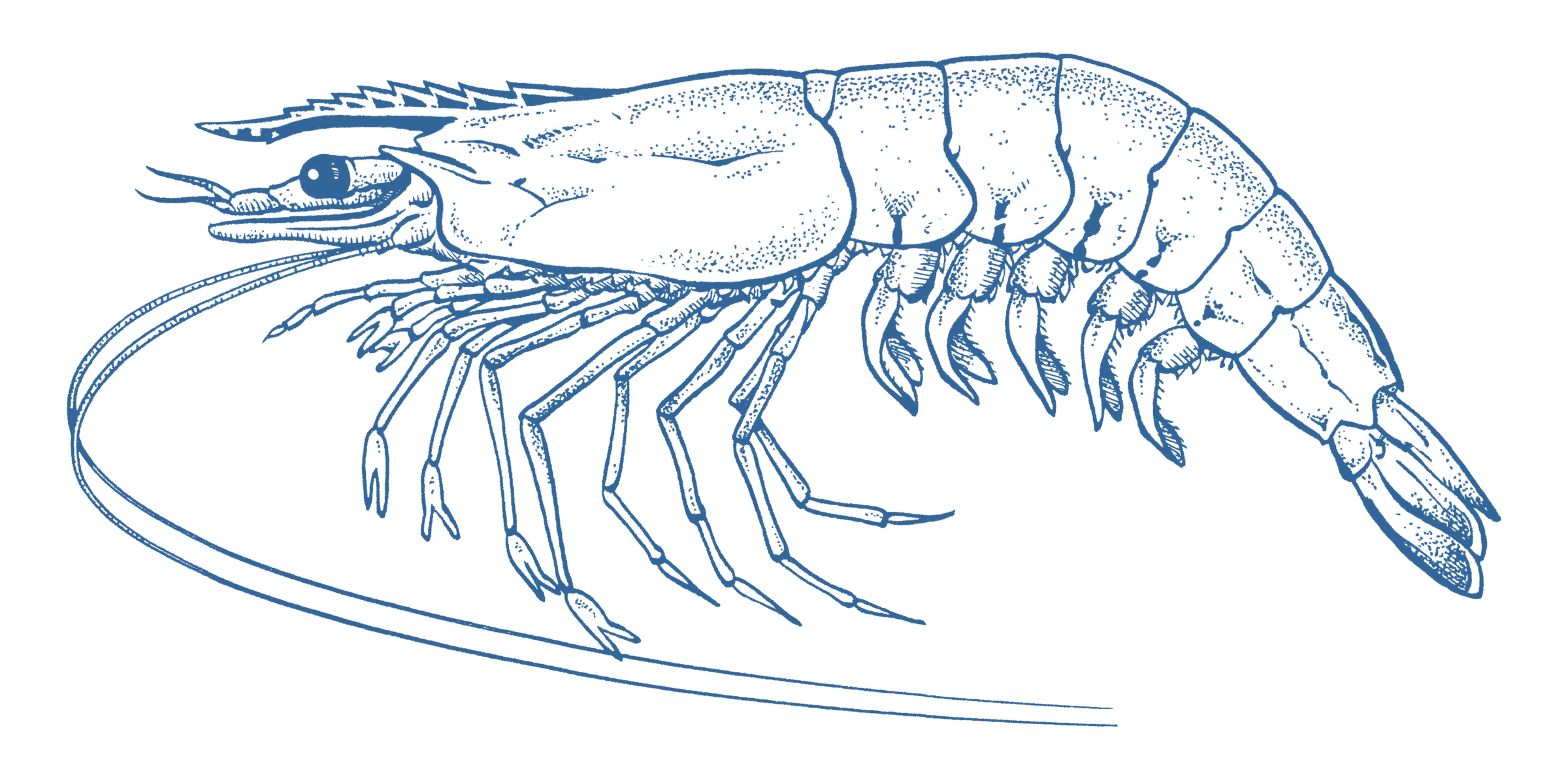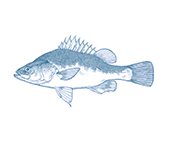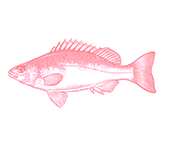




- Eat Less
Wild Caught
Region:
Commonwealth waters
- Banana prawns live in tropical Australian waters, and are short-lived and fast-growing. Commercial fisheries operate across northern Australia. This assessment relates to the Commonwealth-managed fishery which operates from western Cape York to the NT/WA border off the Kimberley.
- Two species of banana prawn are caught in the Commonwealth-managed Northern Prawn Fishery; Red-legged banana prawns, which are a small part of the fishery, and mostly taken in Joseph Bonaparte Gulf, and White banana prawns, which are mostly taken in the Gulf of Carpentaria.
- Banana prawns are caught in the Northern Prawn Fishery using trawl nets fished near the surface, around aggregations of breeding prawns that have been identified by spotter planes.
- Abundance of banana prawns is strongly influenced by environmental factors. Populations of both species are likely in healthy condition.
- The habitat impacts caused by the trawl fishing nets used are well understood, and the fishing approach used to target banana prawns in the Northern Prawn Fishery causes less disturbance to the seafloor than other prawn trawl fisheries.
- Bycatch reduction measures are mandatory in these fisheries, and have reduced accidental turtle catches.
- The fishery interacts with threatened species, including critically endangered species of sawfish, sea snakes and pipefish and is investing in reducing these impacts. Sawfish bycatch remains significant but is not thought to be driving further declines in population numbers.
- Commonwealth Northern Prawn Fishery (3,377t of white banana prawn, 652t of red-legged banana prawn in 2022)
Banana prawns are found in shallow estuaries and intertidal areas to depths of 45m. They live in turbid waters for much of their lifespan, inhabiting sheltered mangrove creeks as juveniles and relatively sheltered coastlines as juveniles.
The name ‘banana prawn’ refers to two species – white and red-legged banana prawns; both species live in tropical waters and are short-lived and fast-growing. The vast majority of product sold in the Australian market comes from the Commonwealth managed Northern Prawn Fishery, catching white banana prawns, which operates across northern Australia from western Cape York to the NT/WA border..
In the Commonwealth managed fishery, spotter planes are used to find ‘boils’ or dense aggregations of banana prawns at the sea surface. Trawlers then target these aggregations, which means most of the trawling for banana prawns occurs above the seafloor and habitat damage is reduced. Abundance of both species is strongly influenced by environmental factors, particularly variations in wet season rainfall. Scientific assessments indicate that the red-legged banana prawn population is healthy, and while scientific assessment of white banana prawn abundance is not considered possible, long-term fishing records give confidence that fishing pressure on their populations is sustainable.
The habitats where fishing takes place are relatively well understood in Commonwealth waters, tend not to support sensitive marine communities and are fairly resilient to disturbance. However, relatively little of the areas in which the fisheries operate is protected in spatial closures or marine parks.
Bycatch reduction devices and Turtle exclusion devices are used in fishing nets, and reduce the amount of threatened and other species that are caught and killed in fishing gear. However, threatened species bycatch remains an issue in the Northern Prawn Fishery.
Catches of sea snakes remains high in the fishery, although there is no indication that sea snake populations are declining as a result of fishing activity. Endangered sawfish are caught in the fishery every year, and it is difficult to design modified fishing gear to reduce sawfish mortalities; the shape of their rostrums means they are especially prone to entanglement. The fishing industry has been proactive in researching solutions, and although recent levels of sawfish bycatch may not be driving population declines, action to directly reduce the impact of fishing on sawfish will be required to ensure the fishery maintains an amber GoodFish ranking in future.
The Commonwealth fishery has robust and transparent management arrangements in place, including observer programs, requirements to report discards, assessments of the risk of the fishery to threatened species, successful plans in place to reduce bycatch, and management actions in place to rectify issues in the fishery should they occur. It is likely these management arrangements will maintain the progress of this fishery to reduce the impact on endangered wildlife in future.
Commonwealth marine parks may provide a degree of protection for endangered species and marine habitats. However it is notable that sectors of this industry secured significant reductions in the area of the fishery protected from trawling.


